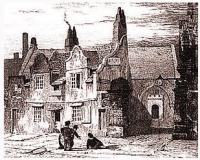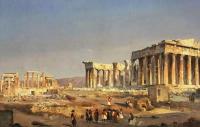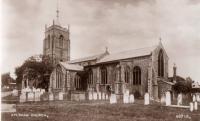
Nat Gould
His life and books
Philip Hunt 1772-1838
| Philip Hunt |
|---|
| Born: 1772 Herefordshire |
| Died: 1838 Aylsham, Norfolk |
| Father |
| Thomas Hunt 1733-1811 |
| Mother |
| Cicely Hodgson 1733-1815 |
| Siblings |
| Thomas Hunt 1761- |
| Mary Hunt 1762-1833 |
| Daniel Hunt 1764-1779 |
| Frances Hunt 1766-1836 |
| John Hunt 1767-1769 |
| William Hunt 1769- |
| William Hunt 1773- |
| Hodgson Hunt 1774-1775 |
Philip Hunt was born on 1 January 1772 in Herefordshire, the son of Thomas Hunt and his wife nee Cicely Hodgson, and was baptised on 31 January 1772 at St Nicholas parish church in Newcastle-on-Tyne. He was educated at the Royal Grammar School in Newcastle-on-Tyne (1). His father had business interests there (2), although his principal residence was in Herefordshire (3).
On 29 October 1788 he entered Trinity College in Cambridge aged only sixteen years, matriculating at Michaelmas. He graduated Bachelor of Arts in 1793 and became Master of Arts in 1799 (4). He was awarded the degree of Doctor of Civil Law in 1817 (5). He entered the ministry of the Church of England, being ordained deacon on 21 September 1794 and priest on 21 February 1796 at Lincoln. The Reverend Philip Hunt served his title as Curate of Houghton Conquest in Bedfordshire to which he was appointed on 21 September 1794.
He served as Vicar of St Peter with St Martin in Bedford from 7 March 1799 to 7 February 1835 (5), Vicar of Ravensden in Bedfordshire from 5 May 1810 to 22 November 1817, Vicar of Willington in Bedfordshire from 5 May 1810 to 4 April 1834, Vicar of Goldington in Bedfordshire from 11 November 1817 to 1 September 1828, Rector of St John the Baptist and Master of St John's Hospital in Bedford from 20 August 1828 to 5 February 1835, a Prebendary of Canterbury from 1833, and Vicar of Aylsham in Norfolk from 1835 to 1838 (6). He had been selected as Dean of Peterborough in 1830 (7), but declined the appointment (8).
He was a Fellow of the Society of Arts, and a Magistrate for the County of Bedford for nearly thirty years. He was an influential Prison Visitor at Bedford Prison, a role that set him among the important prison reformers of the early nineteenth century (9). He was also a House Visitor to the General Kent and Canterbury Hospital (10).
At at time when radical reform was being demanded, and gradually effected by Whig politicians, the practice whereby clergymen held several parishes or other benefices in plurality was questioned. Despite his acknowledged good works in the Bedfordshire parishes, for which he was publicly thanked (11), Philip Hunt was criticised in the press for holding several such benefices and offices, and was especially vulnerable as a staunch supporter of that reforming party (12). Philip Hunt responded rejecting such criticism, explaining that when appointed to the vicarage of Aylsham, admittedly by the patrons the Dean and Chapter of Canterbury of which he was by then a member, he held only that benefice and his prebend or canonry at Canterbury. His responsibilities in the cathedral were not a full time preoccupation and, as with many other clergy similarly placed, he was able to minister effectively in a parish (13).
He was appointed Chaplain and Private Secretary to the Earl of Elgin 1799 (14), and Chaplain to the Levant Company 1799 (15), and received permission from the Bishop of Lincoln to be temporarily absent from his Bedford parish. The 1799 appointments were made in connection with his accompanying the newly commissioned ambassador the Earl of Elgin to take up the post of British ambassador to the Ottoman Empire in Constantinople (16). From 1799 to 1803, as well as performing the duties of chaplain, he became involved in diplomatic affairs including gathering intelligence in Greece and fostering goodwill.
While in Athens, then under Ottoman rule, Philip Hunt was dismayed by the destruction of the ancient buildings on the Acropolis, which had become a military fort. He decided to remove some of the sculptures from the Parthenon. With permission from the Ottoman authorities, he organised the removal of sculptures and their safe transport to England. They became known as the Elgin Marbles, and are now in the British Museum in London.
On his return overland through France, he was detained and imprisoned for two years by Napoleon Bonaparte, eventually returning to Bedford in October 1805 after an absence of six years (17). He moved from Bedford to Aylsham in 1835 (18).
The Reverend Dr Philip Hunt was unmarried, and during the last years of his life he was attended by his favourite niece Frances Gould 1789-1843 (19).
He made his Will on 7 September 1838, added a Codicil a week later, and died on 17 September 1838 at Aylsham.
"The church there has a wall monument which describes him as 'a powerful preacher, an elegant scholar and active magistrate'.
After his death letters of tribute flowed in to his niece, but real public acknowledgment of his truly remarkable efforts never came" (20).
(1) Newcastle Journal 28 October 1843. The fate of the old school building was being discussed at that date, and Philip Hunt is mentioned among the scholars who had been educated there.
(2) Law and Order in Georgian Bedfordshire Bedfordshire Historical Society volume 61 E. Stockdale (1982) page 31. This scholarly but highly readable work provides an excellent account of the travels of the Reverend Philip Hunt in the Levant and his social work in Bedfordshire.
(3) Hereford Times 29 September 1838; Worcestershire Chronicle 4 October 1838.
(4) Alumni Cantabrigienses Part II 1752-1900 J.A. Venn volume III (1947) page 491.
(5) Cambridge Chronicle and Journal 17 October 1817.
(6) CCEd Clergy of the Church of England Database www.theclergydatabase.org.uk ; Alumni Cantabrigienses Part II 1752-1900 J.A. Venn volume III (1947) page 491; Gentleman's Magazine (1799) volume 86 page 540; Newcastle Courant 4 May 1799; Hereford Journal 16 May 1810; and Newcastle Courant 18 May 1799. Gentleman's Magazine (1838) volume 165 page 561 incorrectly gives the dates of his being Rector of St Peter's in Bedford as 1798-1833 and of becoming Vicar of Aylsham as 1834.
(7) Stamford Mercury 16 July 1830; Birmingham Gazette 16 July 1830; Coventry Herald 23 July 1830; London Standard 14 July 1830. It was alleged that he had been disappointed not to have become Dean of Peterborough (Kentish Gazette 10 December 1833) but in fact he declined the invitation.
(8) Huntingdon, Bedford and Peterborough Gazette 21 February 1835.
(9) Law and Order in Georgian Bedfordshire Bedfordshire Historical Society volume 61 E. Stockdale (1982) pages 51 to 65.
(10) Kentish Gazette 24 November 1835.
(11) "The schools and charities ... the gaol, the penitentiary, the infirmary, the asylum, have long been the scene of your judicious and active labours, and reaped the benefit of your superintendence. The local tie, we regret to say, is now dissolved, but the feeling which it has inspired will continue to survive": Hertford Mercury and Reformer 6 June 1837; Northampton Mercury 10 June 1837.
(12) Essex Standard 14 December 1833. One of the criticisms was that his doctorate was of Scots origin, but he was in fact awarded the degree of Doctor of Civil Law on 10 October 1817 at Cambridge: Cambridge Chronicle and Journal 17 October 1817.
(13) Huntingdon, Bedford and Peterborough Gazette 21 February 1835.
(14) Northampton Mercury 26 May 1810.
(15) Sherborne Mercury 16 December 1833.
(16) Newcastle Courant 4 May 1799.
(17) Law and Order in Georgian Bedfordshire Bedfordshire Historical Society volume 61 E. Stockdale (1982) pages 43 and 44.
(18) At Aylsham he became Chaplain to the Earl of Leicester (22) whose principal seat was at Holkham Hall in Norfolk: Hereford Times 29 September 1838.
(19) Law and Order in Georgian Bedfordshire Bedfordshire Historical Society volume 61 E. Stockdale (1982) pages 33 and 65.
(20) ibid page 65.



